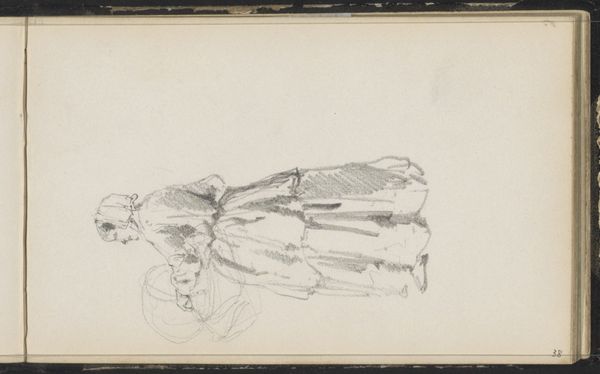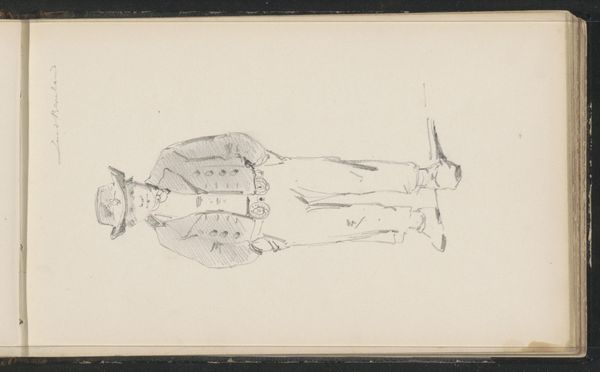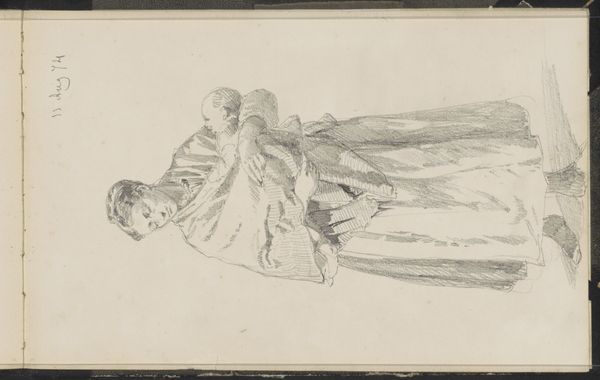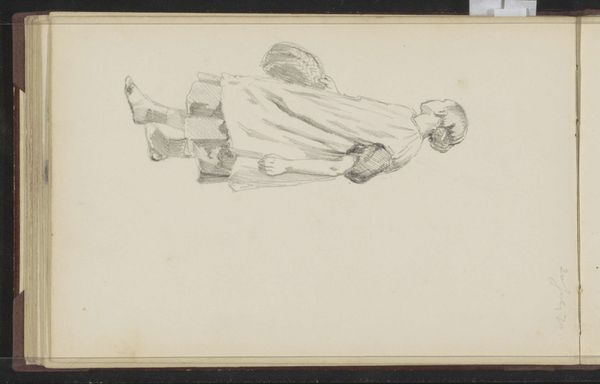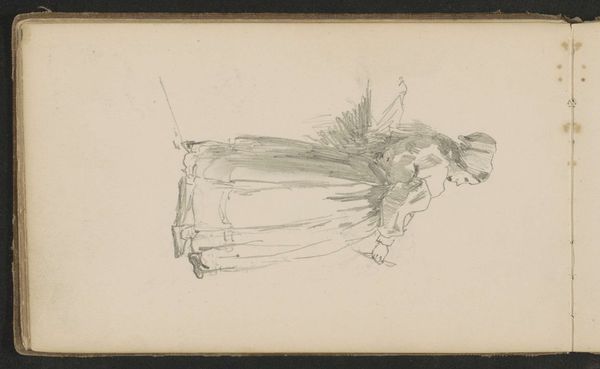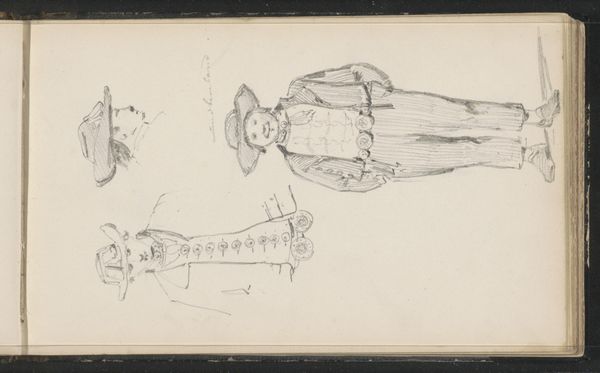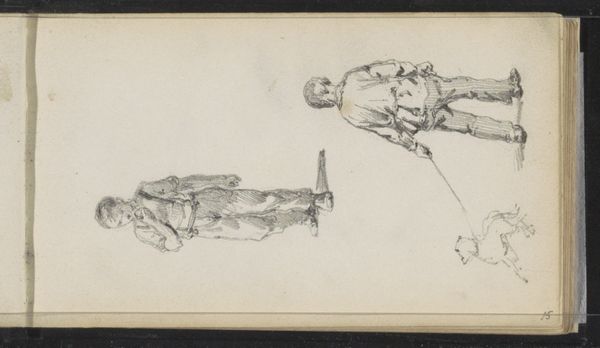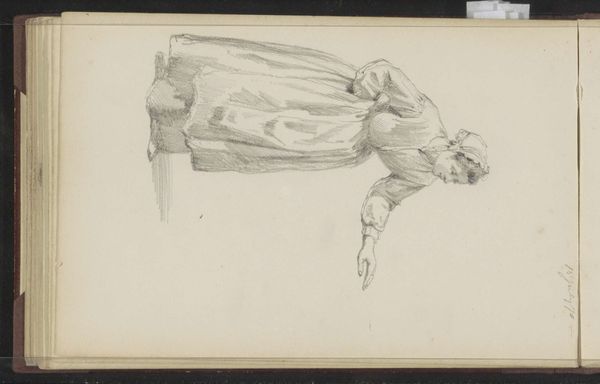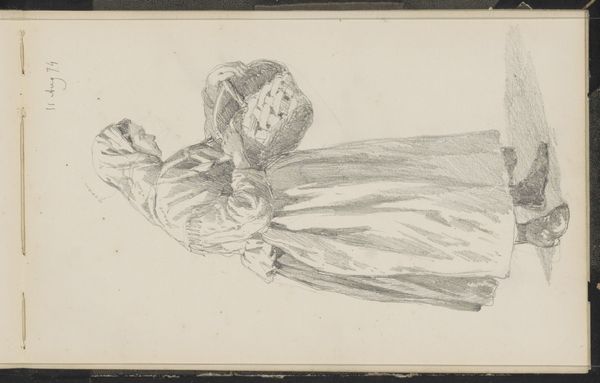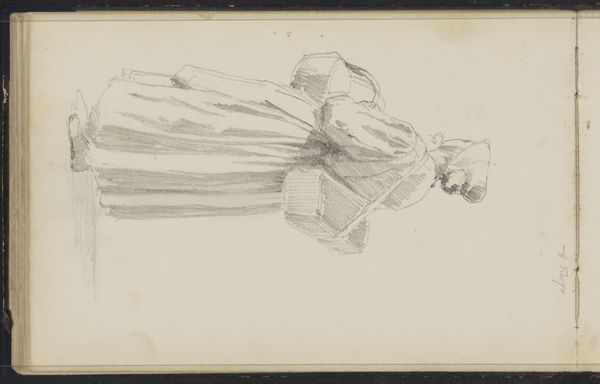
drawing, paper, pencil
#
portrait
#
drawing
#
pen sketch
#
sketch book
#
incomplete sketchy
#
hand drawn type
#
paper
#
personal sketchbook
#
ink drawing experimentation
#
pen-ink sketch
#
pencil
#
pen work
#
sketchbook drawing
#
genre-painting
#
sketchbook art
Copyright: Rijks Museum: Open Domain
Editor: This pen and pencil drawing on paper, "Twee vrouwen," or "Two Women," is attributed to Cornelis Springer and dates from around 1860 to 1866. The sketches, quickly rendered, appear on what looks like a page torn from a sketchbook. It feels intimate, like a stolen glance at everyday life. As a historian, what stands out to you? Curator: What's striking is how seemingly ordinary scenes like this became subjects for artistic exploration during this period. The mid-19th century witnessed a rising interest in depicting contemporary life, fueled by social changes like industrialization and urbanization. The question becomes, how does an artwork like this participate in constructing or reflecting societal values? Editor: That's fascinating. I hadn't considered the connection to societal values. Are you suggesting that the act of portraying these ordinary women elevated their status in some way? Curator: It's a complex issue. While portraying ordinary individuals could be seen as a democratic gesture, granting them visibility, it could also reinforce existing power structures. Who is doing the portraying, and for what audience? Springer likely came from a privileged background. Are these sketches simply exercises in observation, or is there an intention to comment on the lives of these women, potentially for a more affluent audience? The medium also matters: sketches weren't always intended for public consumption like finished paintings. Editor: So, even a seemingly simple drawing holds layers of social commentary? Curator: Absolutely. Consider where it was intended to be seen and consumed, who was able to access and appreciate this kind of artwork, and how the act of representing these "ordinary" women shapes their place in history and memory. Think about how these images were exhibited and understood in their time. That adds so much more depth. Editor: I see! I didn't realize how much context plays a role in how we understand something as straightforward as a simple sketch. Thanks for that! Curator: My pleasure. Considering the socio-political dimensions offers such a rich understanding of not only the artwork but also the era it represents.
Comments
No comments
Be the first to comment and join the conversation on the ultimate creative platform.

